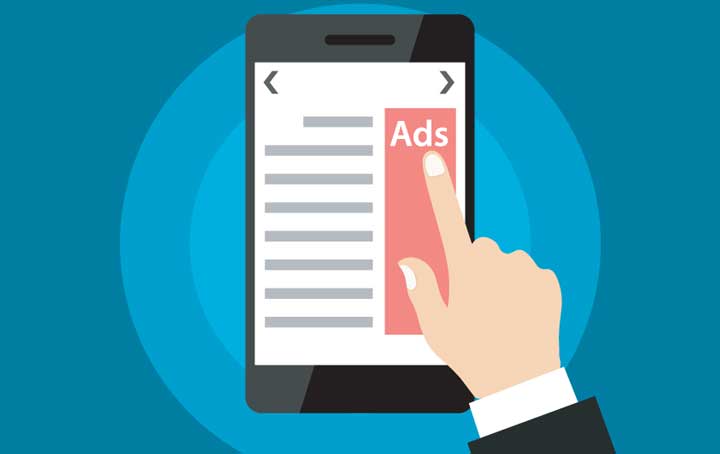Share This
Introduction to Social Media Advertising

Even if you do not like social media, you should not discount its popularity, especially if you want to increase your brand’s reach. You do not have to avoid social media in your private life but you should embrace it and incorporate it into your marketing strategy. Not doing so can limit your opportunities to generate leads and revenue.
This article touches on the major types of social media ads, the most popular platforms, and special considerations every business leader and marketer will face when dealing with social media advertising.
What is Social Media Advertising?
A subset of social media marketing, social media advertising is the use of platforms like Facebook, Instagram, LinkedIn, and TikTok to deliver paid advertisements to targeted users. There are several types of social media ads with image, video, Stories, and Messenger ads being the four most used.

Types of Social Media Ads
Image ads
Pictures have long been a staple of advertising for decades. They can capture an audience’s attention and generate interest in a product or service. Image ads should be firmly placed in any social media advertising campaign. They still work.
You can place image ads on almost every social media platform but you should focus on image-centric platforms like Facebook and Instagram.
Video ads
Videos can engage audiences more than a static image. They can create memorable experiences that resonate longer than an image ad. Video ads are basically television ads. You can place them on nearly every social media platform. Again, you should use them on platforms that feature videos like TikTok.
Stories ads
A relatively new form of advertising, Stories are bite-sized ads that can appear between other users’ Stories. Each ad can be an image or video ad. Facebook and Instagram are the two most popular platforms that feature Stories.
Messenger ads
This type of advertising involves placing ads in a platform’s messenger, meaning they appear as a message. Facebook and LinkedIn are two platforms that allow marketing teams to explore this option.
Popular Social Media Networks
If you want to expose your brand to the most people, then you have to advertise where the people are. When it comes to the most popular social media networks, Facebook, Instagram, LinkedIn, and TikTok are currently the four busiest platforms in the world. However, each platform has a specific demographic that you should consider when devising a marketing campaign. Publishing the wrong content to a platform will probably have little to no effect on increasing your brand’s reach. Publishing the right type of content that speaks to the platform’s primary demographic can save you time and money as well as be more effective.
What makes Facebook so popular? Its accessibility? Perhaps the platform’s versatility is the secret to its success, which means it is an excellent advertising platform for nearly every type of business. While not the best platform to organically reach new audiences, Facebook’s paid advertising can reach a large portion of adults since many adults around the globe use the platform.
Facebook’s most popular age group is the 25-to-34 crowd but the 65+ demographic has substantially risen in recent years. In fact, some studies find that for most 65+ adults, Facebook is their preferred social media platform.
This social media platform focuses on visuals like photos and videos. As such, it is one of the better platforms to focus on organic marketing strategies. Its paid advertising options can help you reach just as many people if not more.
Instagram’s main demographic is the 18-to-34 population, giving you plenty of opportunities to reach a wide range of people.
A business-based social media network, LinkedIn can help you reach professionals and other businesses, which can be great if your products or services are geared toward them. LinkedIn can be a fruitful organic channel but keep in mind that the platform focuses on business professionals. What works on Instagram might not work here.
LinkedIn’s primary demographic includes professionals from 46 to 55 years old, a far cry from other social media demographics.
TikTok
One of the newest kids on the block, TikTok is the opposite of LinkedIn. Focusing on silly, feel-good videos, the platform is a wide-open slate for paid and organic growth. You only have to make entertaining videos to have any level of success.
TikTok’s main demographic is the 13-to-17 and 25-to-34 populations.

Is Now the Right Time to Pay for Social Media Ads?
With a looming recession lurking over our shoulders, businesses might not want to invest in social media advertising right now. While the choice is entirely yours, paid advertising could expose your brand to an audience that is hungry for your product or service. They can not do business with you if they do not know what you can do for them. With that said, there are a few points you should consider before you spend your first advertising dollar.
Social media is pay to play
It takes money to make money. If you want to make your business profitable, then you must spend money to get your brand in front of as many people as you can. Paid social media ads can get you quick results. They can bypass a social media platform’s algorithms that hold organic efforts back. You can enjoy more rewards for less effort but you will have to pay for that privilege.
Budget considerations
Regardless of the cost, you must allot room in your budget for marketing. Whether you pursue social media advertising or other avenues, your brand can stagnate and wither away if you can not attract paying customers.
You should remember that your marketing budget should cover more than ad placement. You have to create content. Without it, your ads are useless. You will have to hire someone to create content or purchase the software and tools to create it yourself.
You should research every social media platform that you are interested in advertising on. Note their rates and determine how much you are willing to spend to have your ads seen. You can add this total to how much money you will spend on content creation. This figure can give you a general idea of the amount you should set aside in your budget.
You should also assess the time investment social media advertising will exact on your business, especially if you choose to create content in-house. The time you or your team spends on writing copy or recording videos could be better spent elsewhere. Plus, it takes time to learn how to write the best copy, use the latest technology, and craft platform-specific ads. In addition, you have to take time to monitor each ad’s performance. While most if not all social media platforms grant their users access to analytics, it still costs marketing teams time to gauge how well their ads fare. They can expect to spend even more time modifying poorly-performing ads and tracking those.
Outsourcing marketing can save you time but cost you money. Budgeting both can be a risky balancing act but one you have to tackle to create interest in your brand.
Follow-up processes
Following up with the leads your social media ads generate can prove just as challenging as reaching them in the first place. Social media users generally do not use their platforms of choice to connect with businesses. They use social media to keep in touch with their loved ones and share their lives. If they connect with your brand and show interest, then you have to ensure that closing the sale is as simple as possible. An inconvenient process can turn off prospective customers. Reaching them after the initial contact can prove difficult. Not everyone constantly uses social media. Some might only sign in every few weeks or longer. You should let them complete the sale immediately after they follow your ad’s call to action. You could lose them if you do not.
For follow-ups that require a personal touch, you must have an effective system in place to manually follow up as soon as possible. Social media leads can quickly go cold. You do not have to call customers at midnight, but you should follow up the following morning. You should act when the prospect is most likely to convert to a sale.

Social Media Advertising Can Improve Your Chances
Organic advertising on social media is an uphill battle. While you might see growth, you will also fight your competition and the platform’s algorithms. And for what? A few prospects? One sale?
Paid social media advertising is an investment. It is no different from any other investment you use to build your brand. Knowing how much you can afford and where to focus your efforts can help you gain traction in a hectic business world.